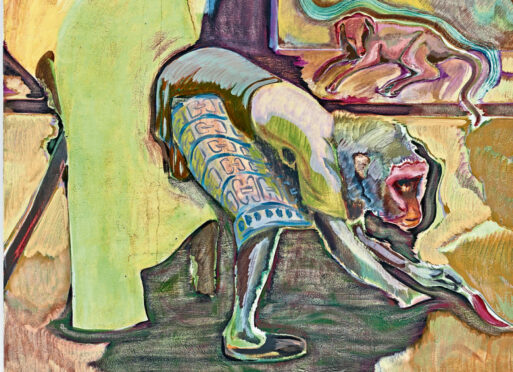
The human body forms the core of an exhibition at Glasgow University’s Hunterian Art Gallery called Flesh Arranges Itself Differently.
The title comes from Margaret Atwood’s novel, The Handmaid’s Tale, which created a dystopian world in which women have been reduced to breeding machines.
Despite the name, this show is not so much making a political comment as showing how artists make us think about bodily experiences.
Flesh Arranges Itself Differently brings almost 50 works of art from the Hunterian’s collection together with loans from the David and Indrė Roberts Collection.
The Hunterian’s collection was established on Dr William Hunter’s bequest of medical collections; the core of his life’s work. Today, its collection ranges from early anatomical drawings and models to contemporary works of art.
The David and Indrė Roberts Collection consists of 2,500 works from the mid-20th Century. The collection was established 30 years ago by David Roberts (inset).
Featuring paintings, drawings, textile works, sculptures and video work, the exhibition ranges from historical to contemporary.
Highlights include anatomical drawings done at in 1874 by Glasgow Boy, Robert Macaulay Stevenson, and an etching by William Hogarth from 1753 from his Analysis Of Beauty series.
Christine Borland is represented by her 2010 film, SimWoman, a video work which focuses on a medical mannequin, cast from Borland’s body.
From Swiss painter Miriam Cahn’s creepy female nudes to Vietnamese artist Danh Vo’s livid pink doctored version of Andy Warhol’s electric-chair print, the viewer is taken on a rollercoaster ride inside and outside the body.
The exhibition runs to April 3.
Project Ability, a visual arts studio, gallery and shop based at Trongate 103 in Glasgow’s Merchant City has been supporting people with disabilities and mental ill-health to make art since 1984.
For its latest exhibition, Ebb & Flow, which runs until February 26, a group of artists have been inspired by visits to the newly opened Claypits Nature Reserve in Glasgow. The Forth and Clyde Canal and all its ripples, reflections, wildlife and architecture, feature prominently in this beautiful show.

Enjoy the convenience of having The Sunday Post delivered as a digital ePaper straight to your smartphone, tablet or computer.
Subscribe for only £5.49 a month and enjoy all the benefits of the printed paper as a digital replica.
Subscribe